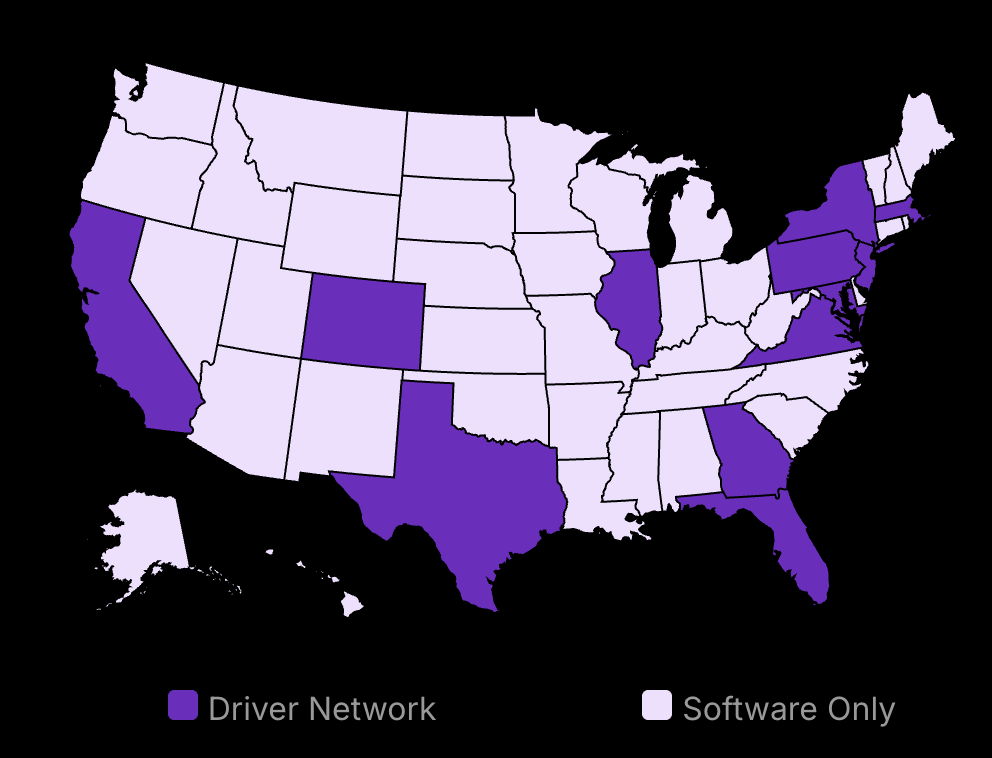Running out of stock is one of my biggest nightmares as a business owner. If you’re in retail, you know it means customers leaving disappointed and maybe never coming back. In manufacturing, it stops production and causes expensive delays. And in healthcare, it can even put lives at risk. That’s why I’ve made it a priority to really understand safety stock and what it means for keeping my inventory on track.
Yet many inventory managers still rely on gut feelings rather than data to determine safety stock levels. They either keep too much inventory tying up capital and impacting cash flow, or too little inventory risking stock outs and failing to meet demand. Holding too little safety stock can lead to significant operational disruptions.
What if you could predict exactly how much safety stock you need—not by guessing, but through proven mathematical formulas that account for your unique demand patterns and supply chain variables? Knowing the right safety stock formula is key.
That’s exactly what this guide will show you. We will explore why safety stock important for your operations.
We’ll break down safety stock calculation into clear, actionable steps that even those who dislike math can follow. You’ll learn to:
Apply the correct safety stock formula for your specific situation
Forecast inventory demand with remarkable accuracy
Calculate precise reorder points that balance cost and availability, considering factors like economic order quantity
Avoid the common mistakes that lead to either overstocking or stockouts, ensuring you have adequate safety stock.
Whether you’re managing a small e-commerce store or overseeing complex industrial inventory, including raw materials and cycle stock, these techniques work across industries and scale with your business. Keeping safety stock effectively is a cornerstone of good logistics and inventory management.
Are you ready to transform your inventory management from reactive guesswork to proactive precision? Let’s start with the fundamental safety stock formula that forms the foundation of data-driven inventory control, ensuring you have the right safety stock to avoid losing sales.

Save 80% of delivery management time
We handle everything:
- Dedicated operations manager
- Real-time tracking dashboard
- Automated customer notifications
- Urgent issue resolution
Step 1: Safety Stock Formula Explained and Understanding Buffer Stock
Calculate exact buffer inventory needed using standard formulas. This extra stock acts as a crucial reserve.
Learn to balance inventory costs with stockout prevention.
Apply statistical methods to real inventory data.
1. Identify Key Variables
Safety stock calculations start with identifying the correct variables. These variables form the foundation of any safety stock formula and determine how much safety stock inventory you should keep on hand.
The first key variable is demand during lead time. This represents how much of a product your business will need during the period between placing an order and receiving it. For example, if it takes 10 days to receive new inventory and you sell 5 units per day, your expected demand during lead time is 50 units. This baseline helps you determine the minimum inventory needed during replenishment periods.
The second critical variable is standard deviation, which measures how much your actual data points (either demand or lead time) spread out from the average. A higher standard deviation indicates greater unpredictability in your supply chain. For instance, if your average daily sales are 100 units but some days you sell 50 and others 150, you have high variability that requires more safety stock than a business with consistent daily sales of 95-105 units.
Collecting Accurate Variable Data
To collect accurate data for these variables, you’ll need:
Historical sales records for at least the past 6-12 months
Detailed lead time records from your suppliers
Any seasonal factors that might affect either variable
Many inventory management systems automatically track these metrics, but you can also collect them manually through spreadsheets if needed. The quality of your safety stock calculation directly depends on the accuracy of this initial data.
2. Understand Basic Safety Stock Formula and How Much Safety Stock is Needed
The most widely used safety stock formula balances simplicity with effectiveness:
Safety Stock = Z-score × Standard Deviation × √Lead Time
This formula incorporates three critical elements:
The Z-score represents your desired service level (how often you want to avoid stock outs).
Standard deviation captures the variability in your demand.
The square root of lead time accounts for time-based uncertainty.
For example, if your standard deviation of daily demand is 10 units, your average lead time is 9 days, and you want a 95% service level (Z-score of 1.65), your calculation would be:
Safety Stock = 1.65 × 10 × √9 = 1.65 × 10 × 3 = 49.5 units
This means keeping about 50 extra units on hand will prevent stockouts most of the time.
“Calculating optimal safety stock levels involves factors such as lead time, demand variability, and service level targets using various formulas,” according to NetSuite.
Service Level Considerations
Your service level directly impacts how much safety stock you need:
90% service level = Z-score of 1.28
95% service level = Z-score of 1.65
98% service level = Z-score of 2.05
99% service level = Z-score of 2.33
Z-score and Service Level Correlation: A Z-score of 1 corresponds to an 84% service level, meaning there will be enough inventory 84% of the time.
Higher service levels require more safety stock, which increases inventory carrying costs. The right balance depends on:
The cost of carrying extra inventory
The cost of stockouts (lost sales, customer dissatisfaction)
Product margins and perishability
Industry standards and customer expectations
For high-value or critical items, you might choose a service level of 98% or higher. For low-value items with minimal stockout consequences, 90% might be sufficient. Achieving a high customer service level often necessitates careful safety stock planning.
3. Execute Step-by-Step Calculation
Now let’s work through a complete example to demonstrate the calculation process:
Step 1: Calculate the average daily demand
Add up total sales for a specific period (e.g., 5,000 units over 100 days).
Divide by the number of days (5,000 ÷ 100 = 50 units per day).
Step 2: Calculate the standard deviation of daily demand
Record daily demand for each day in your sample period.
Calculate how much each day’s demand differs from the average.
Square each difference, sum them, divide by the number of samples, then take the square root.
Let’s say our standard deviation is 12 units.
Step 3: Determine your lead time
Record how long it typically takes from ordering to receiving inventory.
Calculate the average (let’s say 14 days).
Calculate the standard deviation of lead time if it varies (let’s say 2 days).
Step 4: Choose your service level and find the corresponding Z-score
For a 95% service level, Z = 1.65.
Step 5: Apply the formula
Safety Stock = Z × Standard Deviation × √Lead Time
Safety Stock = 1.65 × 12 × √14 = 1.65 × 12 × 3.74 = 74.1 units
You should maintain approximately 74 extra units as safety stock to achieve a 95% service level.
Handling Variable Lead Times
When both demand and lead time are variable, you need a more complex formula:
Safety Stock = Z × √[(Average Lead Time × Variance of Demand) + (Average Demand² × Variance of Lead Time)]
For example:
Average daily demand: 50 units
Variance of daily demand: 144 (standard deviation of 12 squared)
Average lead time: 14 days
Variance of lead time: 4 (standard deviation of 2 squared)
Safety Stock = 1.65 × √[(14 × 144) + (50² × 4)]
Safety Stock = 1.65 × √[2,016 + 10,000]
Safety Stock = 1.65 × √12,016
Safety Stock = 1.65 × 109.6
Safety Stock = 180.8 units
This calculation shows you need about 181 units of safety stock when accounting for both demand and lead time variability. Safety stock acts as a critical buffer in these situations.
4. Apply Understanding to Real-World Data
Once you understand the formula, apply it to your actual inventory data. Start by examining your highest-value or most critical items, as these will have the biggest impact on your business.
First, export your historical sales data and lead time records into a spreadsheet. Most inventory management systems allow you to download this information in CSV format. Create separate columns for:
Daily demand
Lead time for each order
Calculated averages
Calculated standard deviations
Next, create a formula cell that multiplies your Z-score by the standard deviation and the square root of lead time. This gives you your recommended safety stock.
For more precision, segment your analysis by:
Product categories (some may need higher service levels)
Seasons (you might need more safety stock during peak periods)
Supplier reliability (less reliable suppliers require higher safety stock)
Review your safety stock calculations quarterly to adjust for changing patterns in demand or supply chain performance. This ensures your buffer inventory remains optimized as your business evolves. Holding less safety stock might be possible with more reliable data.
Evaluating Results and Making Adjustments
After implementing your calculated safety stock levels, track two key metrics:
Stockout frequency – If you’re still experiencing stockouts despite your safety stock, you may need to increase your service level or check for calculation errors.
Inventory carrying costs – If your carrying costs increase significantly, evaluate whether the higher service level justifies the additional expense.
The perfect safety stock level balances these competing concerns. Start with your calculated value, then make small adjustments based on real-world results.
For items with limited historical data, start with a more conservative (higher) safety stock level, then adjust downward as you gather more data. Remember that safety stock calculations are guidelines rather than absolute rules—your business knowledge and experience should always inform the final decision.
Step 2: Inventory Demand Forecasting Techniques for Better Inventory Management
Demand forecasting is the foundation of effective safety stock calculations.
Combine historical data analysis with advanced analytics for accurate predictions.
Cross-functional input improves forecast reliability and reduces inventory costs.
1. Use Historical Data Analysis
Historical data serves as the cornerstone of any reliable demand forecasting system. This approach requires examining past sales records and consumption patterns to identify trends that help predict future demand.
The first step is data collection and cleaning. Incomplete or inaccurate data leads to poor forecasts, so companies must invest time in validating their historical information. This includes removing outliers, filling gaps, and ensuring consistent measurement units across all data points.
Time series analysis represents the next level of historical data analysis. This method examines how demand changes over time by breaking down historical patterns into components: trend (long-term direction), seasonality (predictable fluctuations), cyclical patterns (less predictable long-term fluctuations), and random variations. Tools like Excel, Tableau, and Sigma help organize this data into visual formats that make pattern identification easier.
Advanced Pattern Recognition Techniques
Moving beyond basic time series analysis, advanced pattern recognition techniques help identify complex relationships in demand data:
Moving averages smooth out short-term fluctuations to highlight longer-term trends. Simple moving averages give equal weight to all observations within the calculation period, while weighted moving averages assign greater importance to more recent data points.
Exponential smoothing addresses a key limitation of moving averages by giving more weight to recent observations while still incorporating older data. This makes it particularly effective for products with changing demand patterns or growing/declining markets.
The Holt-Winters method extends exponential smoothing to account for both trend and seasonality, making it ideal for products with clear seasonal patterns. This technique has become standard in many inventory management systems because it balances simplicity with effectiveness.
2. Implement Predictive Analytics
Predictive analytics takes demand forecasting beyond historical patterns by incorporating advanced statistical models and machine learning algorithms that can identify subtle relationships between variables. These systems analyze large datasets to reveal patterns human analysts might miss.
Machine learning algorithms like random forests and neural networks can process thousands of variables simultaneously, identifying complex relationships between factors like weather patterns, economic indicators, competitive promotions, and consumer sentiment. This multi-variable approach provides a more nuanced understanding of what drives demand.
Modern predictive analytics platforms also incorporate external data sources that might influence demand. These include economic indicators, social media trends, weather forecasts, competitor pricing, and industry news.
Real-time data processing represents another advantage of predictive analytics. Traditional forecasting methods typically operate on monthly or weekly cycles, but modern systems can continuously update predictions as new data becomes available. This allows businesses to respond quickly to changing market conditions, particularly important for fast-moving consumer goods or products with short life cycles.
Implementing Machine Learning for Demand Forecasting
Several machine learning approaches have proven effective for demand forecasting:
Regression models establish relationships between demand and various influencing factors. Linear regression serves as a starting point, while more complex regression techniques like ARIMA (Autoregressive Integrated Moving Average) can capture time-dependent patterns.
Classification and clustering algorithms group products with similar demand patterns, allowing businesses to apply appropriate forecasting techniques to each group. This is particularly useful for companies with large product catalogs where a one-size-fits-all approach would be ineffective.
Deep learning methods, particularly recurrent neural networks (RNNs) and long short-term memory networks (LSTMs), excel at capturing complex temporal patterns in demand data. These approaches are becoming more accessible through cloud-based platforms that require minimal technical expertise to implement.
3. Apply Qualitative Methods
While quantitative methods form the backbone of demand forecasting, qualitative input from experts provides context and insight that numbers alone cannot capture. This human element becomes particularly important when historical data is limited or during periods of significant market change.
Cross-functional collaboration brings together perspectives from sales, marketing, product development, and supply chain teams. Sales teams provide ground-level insights about customer intentions and competitive pressures. Marketing teams offer information about upcoming campaigns that might drive demand spikes. Product teams share details about product improvements or new launches that could affect sales patterns.
The Delphi method represents a structured approach to gathering expert opinions. This technique involves collecting anonymous forecasts from various experts, sharing the aggregate results, and then allowing experts to revise their estimates based on the group’s feedback. Through several rounds of this process, the group typically converges toward a consensus forecast that incorporates diverse perspectives while minimizing individual biases.
External stakeholder input further enhances forecast accuracy. Regular communication with key customers about their future purchasing plans provides direct insight into a significant portion of demand. Similarly, suppliers often have valuable perspective on market trends based on their interactions with multiple customers in the same industry.
Building a Forecast Review Process
Creating a structured process for incorporating qualitative input ensures this valuable information translates into better forecasts:
Scheduled forecast review meetings bring together representatives from different departments to discuss upcoming demand drivers. These meetings work best when supported by a shared forecasting platform where participants can see both historical data and current projections.
A documented adjustment process establishes clear guidelines for when and how to modify statistical forecasts based on qualitative input. This typically includes recording the rationale for adjustments and tracking their impact on forecast accuracy over time.
Post-mortem analysis compares forecasts to actual results to identify improvement opportunities. This learning process helps teams refine both their statistical models and their qualitative input processes over time.
4. Account for Demand Variability and Uncertainty
Understanding variability in demand patterns is crucial for safety stock calculations. Different products exhibit different levels of demand volatility, and this directly impacts the amount of safety stock required.
Coefficient of Variation (CV) provides a standardized measure of demand volatility. Calculated as the standard deviation of demand divided by the mean demand, CV allows for comparison across products with different volume levels. Products with high CV values (typically above 1.0) exhibit highly variable demand and require proportionally larger safety stocks.
Forecast accuracy measurement complements volatility analysis by quantifying how well your forecasting methods perform. Common metrics include Mean Absolute Percentage Error (MAPE), Mean Absolute Deviation (MAD), and Root Mean Square Error (RMSE). These metrics help identify which products or categories are most challenging to forecast accurately.
Scenario planning extends beyond single-point forecasts to consider multiple possible future states. This approach acknowledges that even the best forecasts contain uncertainty and prepares the organization for different outcomes. Typical scenarios include base case (most likely), upside (optimistic), and downside (pessimistic) projections.
Statistical Approaches to Uncertainty
Several statistical techniques help quantify and manage forecast uncertainty:
Confidence intervals express the range within which actual demand is likely to fall. For example, a 95% confidence interval indicates the range where demand should fall 95% of the time if the forecast model is accurate. Wider confidence intervals signal greater uncertainty and suggest higher safety stock requirements.
Monte Carlo simulation generates thousands of possible demand scenarios based on historical patterns and known constraints. This approach produces a probability distribution of possible outcomes rather than a single forecast value, providing a more nuanced view of potential demand patterns.
Bayesian forecasting methods combine prior beliefs about demand patterns with new evidence as it becomes available. This approach is particularly valuable when historical data is limited or market conditions are changing rapidly.
5. Integrate Technology and Inventory Management Software Systems
Modern demand forecasting relies heavily on specialized software systems that can process large volumes of data and apply sophisticated statistical methods. These systems range from simple Excel-based tools to enterprise-grade demand planning platforms.
Inventory management software provides the foundation for effective forecasting by maintaining accurate records of historical demand, inventory levels, and supply chain performance. These systems typically include basic forecasting capabilities based on time series methods and can generate alerts when demand patterns deviate significantly from expectations.
Dedicated forecasting platforms offer more advanced capabilities, including machine learning algorithms, external data integration, and collaborative features that support input from multiple stakeholders. These systems often include visualization tools that make complex forecasting concepts accessible to non-technical users.
Enterprise Resource Planning (ERP) integration ensures that forecast information flows seamlessly to purchasing, production planning, and financial systems. This integration helps align organizational activities around a single view of future demand and prevents the inefficiencies that arise when different departments work from different forecasts.
Choosing the Right Technology Solution
When selecting forecasting technology, several factors deserve consideration:
Scalability matters as your business grows and data volumes increase. Cloud-based solutions typically offer greater scalability than on-premises systems, allowing computing resources to expand as needed during peak forecasting periods.
Usability determines whether the system will be adopted effectively across the organization. The best systems combine powerful analytical capabilities with intuitive interfaces that allow non-technical users to understand and contribute to the forecasting process.
Integration capabilities ensure the forecasting system works well with existing business systems. This includes the ability to import historical data from various sources and export forecast information to systems that support purchasing, production, and distribution decisions.
For businesses seeking guidance on safety stock formulas in relation to demand forecasting, the z-formula for safety stock (Safety Stock = Z × σLT) provides a statistical approach where Z represents the service level factor and σLT represents the standard deviation of demand during lead time. This formula directly connects your demand forecasting efforts to your safety stock calculations, creating a cohesive inventory management strategy.
Step 3: Calculating Reorder Point Strategy with Economic Order Quantity Considerations
Set inventory reorder points using reliable lead time data and safety stock calculations.
Create automated triggers to prevent stockouts without excess inventory.
Balance timing with demand to optimize your supply chain efficiency.
1. Determine the Correct Timeframe
The foundation of an effective reorder point strategy rests on selecting the right timeframe for analysis. This begins with understanding your lead time – the period between placing an order and receiving it at your facility. Lead time serves as the primary basis for calculating when to reorder products, as it represents the vulnerable window where you could potentially run out of stock.
To determine your lead time accurately, review your historical purchasing data. Calculate both your average lead time and maximum lead time for each supplier and product. This distinction is important because your average lead time helps establish baseline expectations, while maximum lead time helps prepare for worst-case scenarios. For example, if your typical lead time is 7 days but occasionally stretches to 14 days during peak seasons, both figures will inform your reorder point calculation.
Setting Consistent Review Periods
Once you’ve established lead time parameters, implement consistent review periods to verify and update this information. Regular review cycles ensure your reorder points remain aligned with current supplier performance and market conditions.
Set up a structured schedule for reviewing lead time data:
Weekly reviews for fast-moving items or volatile supply chains
Monthly reviews for standard inventory items
Quarterly assessments of overall lead time trends by supplier
During these reviews, document any changes in lead time patterns and investigate the causes. Supply chain disruptions, seasonal factors, or changes in transportation methods can all affect lead time. By maintaining consistent review periods, you’ll detect shifts in supplier performance before they impact your inventory management.
“Reorder point calculation ensures that you don’t fall behind on your next batch of inventory. With an accurate reorder point for each SKU, you’ll always have enough stock on hand to satisfy customer demand — without overstocking and tying up excess capital in inventory.”
2. Factor in Safety Stock
After establishing timeframes, the next step is incorporating your safety stock values into the reorder point calculation. Your safety stock—which you calculated in Step 1—serves as a buffer against unexpected demand spikes or supply delays. The reorder point combines your expected demand during lead time with this safety stock buffer.
The standard formula for calculating reorder point is:
Reorder Point = (Average Daily Usage × Lead Time) + Safety Stock
This equation ensures you’ll have enough inventory to last through the lead time period plus additional buffer stock for unexpected situations. For example, if you sell 50 units per day with a 10-day lead time and maintain 200 units of safety stock, your reorder point would be:
Reorder Point = (50 × 10) + 200 = 700 units
This means when your inventory level drops to 700 units, it’s time to place a new order.
Adjusting for Seasonal Variations
Your reorder point shouldn’t remain static throughout the year if your business experiences seasonal demand fluctuations. During peak seasons, both your average daily usage and potentially your safety stock requirements will increase.
To account for seasonality:
Calculate separate reorder points for different seasons or quarters.
Adjust your average daily usage based on forecasted demand for the upcoming period.
Consider temporarily increasing safety stock during transition periods between seasons.
3. Set Clear Reorder Triggers
With your reorder points calculated, the final step is establishing clear, actionable reorder triggers within your inventory management system. These triggers transform your mathematical calculations into operational protocols that keep your supply chain running smoothly.
First, program your inventory management software to flag items when they reach their reorder point. Most modern systems allow you to set automatic alerts based on inventory levels. These alerts should be configured to notify the appropriate purchasing staff immediately when stock levels approach the reorder threshold.
For businesses using enterprise resource planning (ERP) systems, integrate your reorder point data directly into the purchasing module. This integration enables automated purchase order generation when inventory reaches the predetermined reorder point, reducing manual intervention and potential delays.
Creating Multi-Level Alert Systems
Implement a multi-level alert system to provide progressive warnings as inventory approaches critical levels:
Early warning alert: Triggers when inventory reaches a certain percentage above the reorder point.
Reorder point alert: Activates exactly at the reorder point.
Urgent replenishment alert: Signals when inventory falls below the reorder point without an order in process.
For each alert level, assign specific response protocols and responsibilities. The early warning might prompt a review of current orders and demand forecasts, while the urgent alert might trigger expedited shipping options or temporary product substitutions.
Monitoring Reorder Trigger Performance
Regularly assess how well your reorder triggers are performing by tracking key metrics:
Order timing accuracy: How often orders are placed at the calculated reorder point.
Stockout frequency: Instances where inventory fell to zero before replenishment arrived.
Excess inventory incidents: Cases where new stock arrived while levels were still well above safety stock.
When setting up your monitoring system, don’t just track if orders were placed at the reorder point, but also whether those orders arrived in time to prevent stockouts. This closed-loop approach helps verify that both your reorder point calculations and your supplier lead times are accurate.
Modern inventory management software can automate safety stock and reorder point calculations using real-time sales and lead time data, improving accuracy and responsiveness. This technology investment often pays for itself through reduced stockouts and lower excess inventory costs.
4. Fine-Tune Your Reorder Strategy
After implementing your initial reorder point strategy, continuous refinement is essential for optimal performance. Regular assessment and adjustment will help your system respond to changing business conditions and improve over time.
Start by analyzing the accuracy of your reorder points against actual outcomes. Are you experiencing stockouts despite having reorder points in place? This might indicate your lead time estimates are too short or your safety stock levels are insufficient. Conversely, if inventory levels consistently remain high after new shipments arrive, your reorder points might be triggering orders too early.
Applying ABC Analysis to Reorder Strategy
Not all inventory items deserve equal attention in your reorder strategy. Implement ABC analysis to prioritize your efforts:
A items: High-value products that contribute significantly to revenue but represent a smaller portion of inventory items. These warrant the most precise reorder points and frequent reviews.
B items: Moderate-value products that typically represent a moderate share of revenue and inventory items. These require standard reorder point management.
C items: Low-value products that might represent a small fraction of revenue but a large portion of inventory items. These can often use simplified reorder approaches.
Pareto Principle in ABC Analysis: ABC analysis is based on the Pareto Principle, where approximately 80% of a company’s sales typically come from only 20% of its products.
A-Grade Product Revenue: A-grade products in ABC analysis are your top-selling products, accounting for around 80% of your revenue.
By tailoring your reorder strategy based on item classification, you can focus resources where they’ll have the greatest impact on your business performance.
Documenting Standard Operating Procedures
Create clear documentation for your reorder point processes to ensure consistency across your organization. Standard operating procedures should include:
Step-by-step instructions for calculating and updating reorder points.
Guidelines for responding to different alert levels.
Protocols for handling exceptions and emergency situations.
Regular review schedules and responsibility assignments.
Decision trees for common reorder scenarios.
These documented procedures will help maintain continuity even with staff changes and provide a foundation for training new team members.
When your reorder point strategy is properly implemented and fine-tuned, it creates a reliable system that balances inventory costs with product availability. Your purchasing decisions become more data-driven and less reactive, resulting in fewer stockouts and more efficient use of working capital.
Step 4: Balancing Inventory Costs, Cash Flow, and Availability
Find the sweet spot between keeping costs low and products available.
Cut carrying costs while maintaining service levels.
Make data-driven decisions about stock levels.
1. Evaluate Current Inventory Costs
The first step in balancing inventory costs and availability is to conduct a thorough assessment of your current costs. This means looking at every expense related to holding inventory. Start by collecting data on your storage costs, which typically include facility rent, utilities, and security. These costs often make up a large portion of carrying expenses, especially for businesses with large physical inventories.
Typical Inventory Carrying Costs: Inventory carrying costs typically range from 20% to 30% of total inventory value, varying by industry and business size.
Next, examine your insurance premiums for inventory coverage. Insurance costs can vary based on inventory value, storage conditions, and risk factors. Don’t forget to factor in capital costs—the money tied up in inventory that could be invested elsewhere. This opportunity cost is often overlooked but represents a significant financial impact on cash flow. For businesses with perishable goods or products with expiration dates, include spoilage costs in your evaluation.
Alternative Carrying Cost Range: Inventory carrying costs are typically between 15% to 30% of the total cost of the inventory itself.
Calculating Your Carrying Cost Percentage
To make this evaluation actionable, calculate your carrying cost as a percentage of total inventory value using this formula:
Annual Carrying Cost Percentage = (Total Annual Inventory Costs ÷ Total Inventory Value) × 100
For example, if your total annual inventory costs are $50,000 and your average inventory value is $500,000, your carrying cost percentage would be 10%.
Average Inventory Investment Cost: Inventory carrying cost is approximately 25% of a company’s average inventory investment, but can run as high as 40% or more.
“Efficiency is doing things right; effectiveness is doing the right things.” This quote from management expert Peter Drucker highlights the importance of not just performing inventory tasks, but ensuring those tasks directly contribute to business goals like balancing costs and availability.
Assessing Current Stock Levels
After understanding your carrying costs, the next step is to assess your current stock levels against actual needs. Pull data from your inventory management system and analyze the following metrics:
Inventory turnover rate (annual sales ÷ average inventory)
Days of inventory on hand (365 ÷ inventory turnover rate)
Fill rate (percentage of orders fulfilled from available stock)
Stockout frequency (number of times items were unavailable)
Average Stockout Rate: The average stockout rate is about 8%, increasing when products are on sale.
Compare these metrics across different product categories and against industry benchmarks. This comparison will help identify where you might be overstocked or understocked. A product with low turnover and high days on hand indicates potential overstocking, while frequent stockouts suggest inadequate safety stock.
2. Identify Inventory Reduction Opportunities
Once you’ve evaluated your current inventory situation, it’s time to look for specific opportunities to reduce inventory while maintaining product availability. This starts with examining your slow-moving stock—items that aren’t selling quickly but are taking up valuable warehouse space and tying up capital.
Generate a report from your inventory management system that ranks products by turnover rate or days on hand. Focus on items that fall in the bottom percentage of movement. For each slow-moving item, determine whether it’s truly necessary to keep in stock. Consider if it’s a critical part, a service component, or if customers expect immediate availability. If not, you may be able to reduce quantities significantly or switch to a make-to-order model for these items.
ABC Analysis for Inventory Reduction
Implement ABC analysis to prioritize your inventory reduction efforts:
Categorize your inventory into three classes:
A items: High-value products (e.g., top 20% contributing to revenue)
B items: Medium-value products (e.g., next 30%)
C items: Low-value products (e.g., remaining 50%)
Apply different inventory control strategies to each category:
A items: Monitor closely and optimize carefully.
B items: Regular review and moderate control.
C items: Simplify control systems and consider significant reductions.
This high percentage reveals why reduction strategies must be implemented carefully.
Implementing Just-In-Time Strategies
Just-in-time (JIT) inventory management can significantly reduce carrying costs by receiving goods only as needed in the production process. To implement JIT effectively:
Build strong supplier relationships with clear communication channels.
Establish reliable delivery schedules with suppliers.
Develop contingency plans for supply chain disruptions.
Start with a pilot program for selected products before full implementation.
Invest in real-time inventory tracking systems.
JIT works best for items with predictable demand and reliable supply chains. Begin by identifying products that meet these criteria and gradually expand your JIT approach as you gain experience and confidence in the system.
3. Implement Cost-Benefit Analysis for Carrying Safety Stock
After identifying potential inventory reduction opportunities, you need to analyze the trade-offs between cost savings and service level impacts. This cost-benefit analysis helps determine which inventory changes will provide the best overall value for your business, especially when considering the implications of carrying safety stock.
Start by quantifying the potential savings from each inventory reduction opportunity. Calculate the carrying cost reduction by multiplying the value of inventory to be eliminated by your carrying cost percentage.
Next, estimate the potential impact on service levels and customer satisfaction. This requires analyzing historical stockout data and customer orders. For each proposed reduction, estimate:
Potential increase in stockout frequency
Expected impact on fill rate
Possible effect on customer satisfaction and retention
Service Level Targets and Costs
Setting appropriate service level targets is crucial for cost-benefit analysis. Higher service levels require more safety stock and higher inventory costs. Consider these guidelines:
A certain service level may be appropriate for standard products with substitutes.
A higher service level may be suitable for important products with few alternatives.
The highest service levels are often reserved for critical items where stockouts are extremely costly.
Each increment in service level requires progressively more inventory investment. This non-linear relationship makes it essential to be selective about which products warrant the highest service levels.
“Carrying only the necessary inventory will prevent extra costs such as storage, handling & transportation fees, insurance and salaries, theft, and even loss from natural disasters.” This practical perspective emphasizes why cost-benefit analysis is so important for inventory optimization.
Decision Matrix for Inventory Changes
Create a decision matrix to evaluate each proposed inventory change. For each item or category, include:
Current inventory value
Proposed reduction amount
Annual carrying cost savings
Current service level
Expected new service level
Estimated impact on sales and customer satisfaction
Final decision (implement, modify, or reject)
Prioritize changes that offer significant cost savings with minimal service impact. For changes with substantial service impacts, consider partial implementation or phased approaches that allow you to monitor outcomes before fully committing.
4. Implement Dynamic Reorder Policies
Moving beyond static inventory levels, implementing dynamic reorder policies allows your inventory levels to respond automatically to changing conditions. This approach optimizes both costs and availability by adjusting order quantities based on current demand patterns and supply chain performance.
Start by segmenting your inventory based on demand patterns. Items with stable, predictable demand can use simpler reorder policies, while items with variable or seasonal demand require more sophisticated approaches. For each segment, determine the appropriate reorder policy type:
Fixed order quantity: Order the same amount each time.
Min-max system: Order when inventory falls below minimum, replenish to maximum.
Periodic review: Check inventory at fixed intervals and order to target level.
Optional replenishment: Combine periodic review with minimum threshold.
Implementing Technology Solutions
Modern inventory management software can automate dynamic reorder policies, making implementation much more feasible. When selecting or configuring software, ensure it can:
Automatically adjust reorder points based on recent demand data.
Account for seasonal variations in demand.
Incorporate lead time variations from suppliers.
Provide alerts when parameters need human review.
Generate reports on policy performance.
For best results, integrate your inventory management system with your point-of-sale and purchasing systems. This integration creates a closed-loop system where sales automatically trigger reordering based on your optimized policies.
Monitoring and Refinement
After implementing dynamic reorder policies, establish a regular review process to monitor performance and make refinements. Key performance indicators to track include:
Fill rate trends by product category
Inventory value over time
Carrying cost as percentage of revenue
Stockout frequency and impact
Order frequency and associated administrative costs
Schedule monthly reviews of these metrics for the first six months after implementation, then quarterly thereafter. Look for opportunities to further optimize by adjusting service level targets, order quantities, or review periods based on actual performance data.
5. Create Cross-Functional Collaboration for Customer Satisfaction
Balancing inventory costs and availability requires input and cooperation from multiple departments to ensure customer satisfaction. Sales teams have insights into customer expectations and upcoming promotions, operations understands production constraints, and finance provides cost parameters. Creating structured collaboration across these functions improves inventory decisions.
Form an inventory optimization team with representatives from sales, operations, purchasing, warehousing, and finance. This team should meet regularly (at least monthly) to review inventory performance metrics and discuss upcoming events that might impact inventory requirements. The team should have clear decision-making authority for inventory policy changes within defined parameters.
Establishing Communication Protocols
Develop formal communication protocols to ensure that information affecting inventory flows smoothly between departments:
Create a standardized format for communicating sales promotions, with lead times for inventory adjustments.
Establish procedures for notifying the inventory team of supplier changes or issues.
Develop a system for sharing customer feedback related to product availability.
Implement regular data-sharing routines between systems and departments.
These protocols ensure that inventory decisions are made with complete information rather than in departmental silos. For example, when the sales team plans a promotion, the inventory team needs advance notice to adjust safety stock levels accordingly.
Aligning Incentives
To promote effective collaboration, align departmental incentives with overall inventory optimization goals:
Ensure sales teams are evaluated not just on revenue but also on forecast accuracy.
Include inventory turnover metrics in operations performance reviews.
Evaluate purchasing on total cost, not just unit price (including inventory impacts).
Incorporate both service level and inventory cost metrics in management bonuses.
By aligning incentives, you remove conflicts that can undermine inventory optimization efforts. Without this alignment, departments may make decisions that optimize their metrics at the expense of overall inventory performance.
“At the core of inventory management lies organization. A well-organized system allows for efficient order processing, accurate tracking, and quick access to inventory information.” This quote highlights why cross-functional collaboration is essential for truly optimizing inventory.
6. Implement Continuous Improvement Cycles
Balancing inventory costs and availability is not a one-time project but an ongoing process of refinement and improvement. Implementing structured continuous improvement cycles ensures that your inventory management keeps getting better over time.
Start by establishing a regular cadence for inventory review and improvement. Quarterly cycles work well for most businesses, allowing enough time to implement changes and collect meaningful data without letting problems persist too long. Each cycle should follow these steps:
Analyze current performance against targets.
Identify the biggest gaps or opportunities.
Develop specific improvement actions.
Implement changes.
Measure results.
Document learnings.
Data-Driven Improvement Methods
Use structured methods to drive your improvement cycles:
Pareto Analysis: Focus on the inventory items causing most problems.
Root Cause Analysis: For persistent inventory issues, dig deeper using techniques like the “5 Whys”.
PDCA (Plan-Do-Check-Act): Follow this scientific method for testing inventory policy changes.
A/B Testing: Try different approaches for similar products to determine optimal policies.
These methods bring rigor to your improvement efforts, ensuring that changes are based on data rather than opinions or assumptions. They also help build organizational knowledge about what works for your specific business context.
Celebrating and Sharing Successes
To maintain momentum in your improvement efforts, celebrate and share successes throughout the organization:
Create visual displays of key inventory metrics in relevant areas.
Recognize team members who contribute to inventory improvements.
Document case studies of successful inventory optimization projects.
Share learnings and best practices across different product categories or locations.
By making improvements visible and celebrating progress, you build a culture that values inventory optimization. This cultural aspect is crucial for sustained results, as even the best processes will fail without engaged team members committed to their success.
Advanced Tips for Inventory Managers on Safety Stock Control
Streamline your inventory with AI-driven demand forecasting.
Adjust safety stock levels based on product classification.
Implement real-time tracking systems to prevent stockouts.
Additional Advice or Alternative Methods
Safety stock control benefits greatly from automated monitoring systems that track inventory levels in real time. These systems can alert managers when stock falls below predetermined levels, allowing for timely reordering before critical shortages occur. Many businesses now use RFID technology and barcode scanning to maintain accurate inventory counts without manual counting. These automated systems reduce human error and provide up-to-date information for better decision-making.
Regular review and updating of forecasts is essential for effective safety stock control. Market conditions change frequently, and forecasts based on old data quickly become inaccurate. Best practice suggests reviewing forecasts at least monthly, with more frequent reviews for fast-moving items or during peak seasons. The book “Inventory Management: Advanced Methods for Managing Inventory within Business Systems” by Donald Waters offers excellent guidance on forecast review processes that adapt to changing market conditions.
Supply chain volatility requires safety stock calculations to incorporate uncertainty metrics. The coefficient of variation (CV), which measures demand variability relative to average demand, helps identify products needing higher safety stock levels. Products with high CV values typically require more buffer stock than those with more predictable demand patterns.
Implementing Multi-Echelon Inventory Optimization
Multi-echelon inventory optimization takes safety stock control beyond single-facility thinking. This approach considers your entire supply chain network—from suppliers to distribution centers to retail locations—when determining optimal safety stock placement. By strategically positioning inventory throughout the network, you can reduce total safety stock while maintaining or improving service levels.
The key to successful multi-echelon optimization is understanding how demand signals and lead times propagate through your supply chain. Software solutions help model these complex relationships.
Common Pitfalls and How to Avoid Them
Using outdated data for safety stock calculations represents one of the most common mistakes in inventory management. Many businesses continue using historical data from years past without accounting for recent market shifts. This problem compounds when companies fail to update lead times after supplier changes or transportation disruptions. To avoid this pitfall, implement a scheduled data review process that refreshes key inputs to safety stock calculations.
Overstocking often results from safety stock calculations that fail to account for carrying costs. When managers focus exclusively on preventing stockouts, they sometimes set safety stock levels too high, which ties up valuable capital in excess inventory. To avoid this issue, calculate the financial impact of different safety stock levels and balance service level targets against the costs.
“Carrying too much safety stock is also a risk because of the extra drain it puts on capital. … Just don’t be tempted to play it ‘safe’ and let high safety stock thresholds be your only strategy—stay informed to make use of diverse strategies and keep your safety stock thresholds in check.”
Siloed decision-making creates another major pitfall in safety stock control. When departments don’t communicate effectively, safety stock decisions may not reflect company-wide goals. For example, sales teams might push for high stock levels to ensure product availability, while finance departments press for inventory reduction to free up capital. The solution requires cross-functional safety stock review meetings where all stakeholders can provide input. These meetings should occur at least quarterly, with clear decision-making frameworks that weigh competing priorities.
Segmenting Products for Targeted Safety Stock Strategies
Not all products deserve equal treatment when it comes to safety stock. Strategic product segmentation allows you to apply different safety stock strategies based on product characteristics. Beyond basic ABC analysis, consider using multiple factors for segmentation:
Demand variability represents a crucial factor for segmentation, as products with highly variable demand need higher safety stock levels than stable products. Calculate the coefficient of variation (standard deviation divided by mean) for each product, then group them into high, medium, and low variability categories.
Supply risk forms another important segmentation dimension. Products sourced from regions with political instability, through complex supply chains, or from financially troubled suppliers carry higher supply risk. For these items, consider using longer lead times in your safety stock calculations or adding an additional buffer. Create a supplier risk scorecard that rates each supplier on factors like financial stability, on-time delivery history, and geopolitical risk, then adjust safety stock accordingly.
Profit margin also influences optimal safety stock strategies. High-margin products can justify higher service levels because the cost of a stockout (lost profit) is greater. Conversely, low-margin products might warrant lower service levels and safety stock. The book “Strategic Supply Chain Management” by Shoshanah Cohen and Joseph Roussel provides excellent frameworks for balancing margin considerations with service level decisions.
Implementing Segmentation in Practice
To implement product segmentation for safety stock, start by creating a multi-dimensional classification system. A simple approach uses a matrix with demand variability (high/medium/low) on one axis and profit margin (high/medium/low) on the other. This creates segments, each with its own safety stock strategy. More sophisticated approaches might include additional dimensions like supply risk or product lifecycle stage.
After segmentation, assign appropriate service level targets to each segment. For example, high-margin products with high demand variability might warrant a higher service level, while low-margin products with low variability might target a lower one. These service levels translate directly to safety stock calculations through the z-score. Document these decisions in a formal safety stock policy that explains the rationale behind each service level assignment.
Leveraging Technology for Dynamic Safety Stock Control
Modern inventory management requires technology solutions that can handle the complexity of dynamic safety stock calculations. Traditional approaches using static safety stock levels fail to adapt to changing market conditions. Instead, implement systems that automatically adjust safety stock based on current demand patterns, lead times, and service level requirements.
Advanced inventory management systems now incorporate machine learning algorithms that identify patterns in demand data and adjust safety stock recommendations accordingly. These systems can detect early signals of demand shifts and modify safety stock levels before traditional statistical methods would recognize the change.
To stay competitive, consider implementing IoT sensors throughout your facility to track inventory movements and conditions. These sensors provide real-time data that feeds into your safety stock calculations, allowing for immediate adjustments when conditions change.
Selecting the Right Technology Solution
When evaluating technology solutions for safety stock control, consider both functional requirements and implementation factors. On the functional side, look for systems that offer probabilistic forecasting (not just point forecasts), automated exception management, and what-if scenario modeling. These features allow you to test different safety stock strategies before implementation.
Implementation considerations include integration capabilities with your existing systems, scalability to handle your product portfolio, and user interface design that makes complex concepts accessible to non-technical users. The implementation timeline and required resources also matter significantly.
Creating a Continuous Improvement Framework for Safety Stock
Safety stock control requires ongoing refinement rather than one-time setup. Establish a formal continuous improvement framework with clear metrics, review cycles, and responsibility assignments. Start by defining key performance indicators (KPIs) that balance service levels against inventory costs. Effective KPIs include:
Fill rate percentage measures the proportion of demand fulfilled directly from stock. This metric directly reflects customer experience and service quality. Track fill rate by product segment to identify areas needing safety stock adjustments.
Inventory turnover ratio shows how efficiently you’re using inventory investment. Calculate this by dividing cost of goods sold by average inventory value. Low turnover may indicate excessive safety stock, while very high turnover might signal insufficient buffers.
Days of supply indicates how long current inventory will last based on forecast demand. This metric helps identify potential overstocking situations when days of supply consistently exceed targets. Set target days of supply based on your replenishment cycle plus required safety stock days. Monitor this metric weekly to catch trends before they become problems.
After establishing metrics, create a structured review process that examines safety stock performance regularly. Monthly reviews should focus on identifying products with consistent stockouts or excess inventory. Quarterly reviews should examine overall safety stock strategy and segmentation approach. Annual reviews should reassess service level targets and overall inventory investment. Each review should produce specific action items with assigned responsibilities and deadlines.
Troubleshooting Common Issues
Quick solutions for fixing inaccurate safety stock calculations.
Steps to resolve system errors that impact reorder processes.
Methods to prevent inventory management failures before they happen.
Solutions to Potential Problems
When managing safety stock, even well-designed systems encounter problems. Recognizing and addressing these issues quickly prevents costly stockouts and excess inventory. Let’s look at two common challenges and their solutions.
Correct Inaccurate Demand Predictions
Inaccurate demand forecasts are among the most frequent problems in safety stock calculations.
Step 1: Identify the source of forecast errors
Start by comparing your forecasts against actual sales data. Look for patterns in the discrepancies—are predictions consistently too high or too low? Do errors spike during certain seasons? Create a spreadsheet that tracks forecast accuracy by product category and time period to spot trends.
Step 2: Clean and validate your input data
Bad data leads to bad forecasts. Check for and correct:
Duplicate entries in sales records
Missing data points
Outliers from one-time events (like bulk orders)
Data entry errors in your inventory system
Step 3: Review your forecasting methods
Different products may require different forecasting approaches. For stable products with consistent demand, simple methods like moving averages may work well. For seasonal or trending items, more complex methods like exponential smoothing or regression analysis might be needed.
Step 4: Implement forecast accuracy metrics
Start tracking metrics like Mean Absolute Percentage Error (MAPE) or Mean Absolute Deviation (MAD) to measure forecast accuracy. Calculate these metrics regularly and set improvement targets.
Step 5: Add human judgment to statistical forecasts
Supplement statistical forecasts with input from sales teams, customer service representatives, and product managers. These teams often have valuable insights about upcoming promotions, market changes, or customer feedback that pure data analysis might miss.
Step 6: Create a forecast review process
Schedule regular meetings (weekly or monthly) with key stakeholders to review forecast performance and make adjustments. Document decisions made during these meetings and track their impact on forecast accuracy.
Step 7: Adjust safety stock levels based on forecast reliability
For products with consistently poor forecast accuracy, consider increasing safety stock levels temporarily while working to improve predictions. This provides a buffer against unexpected demand fluctuations.
Address System Errors in Reorder Processes
System errors in the reorder process can lead to missed reorder points or incorrect order quantities.
Step 1: Audit your current reorder system
Review your reorder process from end to end. Document each step, the systems involved, and the points where errors might occur. Look for:
Manual data entry points
Integration gaps between systems
Delays in data updates
Inconsistent processes across different teams
Step 2: Implement data validation checks
Add automated checks to catch potential errors:
Flag unusually large or small orders.
Set minimum and maximum values for reorder quantities.
Create alerts for orders that deviate significantly from historical patterns.
Verify that reorder points make sense (not negative or unreasonably high).
Step 3: Establish regular system reconciliation
Set up processes to regularly reconcile data between your inventory management system and physical inventory. For example:
Conduct cycle counts on a rotating schedule.
Perform full inventory audits quarterly or annually.
Compare system inventory levels to actual counts and investigate discrepancies.
Step 4: Address integration issues
If you use multiple systems (ERP, warehouse management, e-commerce platforms), ensure they communicate effectively:
Check that inventory data syncs correctly between systems.
Verify that order information passes accurately from sales to fulfillment.
Test integrations regularly to catch issues early.
Step 5: Implement barcode or RFID technology
Reduce manual errors by implementing barcode scanning or RFID technology. This technology can:
Improve accuracy in receiving and shipping.
Provide real-time inventory updates.
Reduce the time needed for physical counts.
Decrease human error in item identification.
Step 6: Create standard operating procedures
Document clear procedures for all inventory-related processes, including:
How to process new inventory.
Steps for handling returns.
Procedures for correcting inventory discrepancies.
Guidelines for processing reorders.
Step 7: Train staff thoroughly
Ensure that all team members understand both the procedures and the importance of accuracy:
Provide hands-on training for new staff.
Offer refresher training periodically.
Create quick reference guides for common tasks.
Emphasize the cost of errors and the value of accuracy.
Preventing Future Problems Through Regular Maintenance
Prevention is always better than troubleshooting. Implementing regular maintenance processes helps catch issues before they impact your business operations.
Step 1: Schedule regular system checks
Set up automated checks that run daily or weekly to identify potential issues:
Inventory items with negative quantities.
Products below reorder points that haven’t been reordered.
Items with unusually high or low turnover rates.
Products with recent significant changes in demand patterns.
Step 2: Implement exception reporting
Create reports that focus only on exceptions or outliers rather than reviewing all inventory data. This helps you identify problems quickly without sorting through vast amounts of normal data.
Step 3: Establish a data quality program
Implement processes specifically focused on maintaining data quality:
Regular data audits.
Clear data ownership responsibilities.
Data quality metrics and targets.
Procedures for correcting bad data.
Step 4: Create a continuous improvement cycle
Establish a formal process for reviewing and improving your safety stock control:
Document problems when they occur.
Analyze root causes.
Implement solutions.
Monitor results.
Share learnings across the organization.
Building Resilience in Your Inventory System
Creating a resilient inventory system requires thinking beyond day-to-day operations to prepare for unexpected disruptions.
Step 1: Identify critical vulnerabilities
Assess your inventory system for single points of failure:
Sole-source suppliers.
Key staff with unique knowledge.
System dependencies without backups.
Physical vulnerabilities (like warehouse location).
Step 2: Develop contingency plans
Create specific plans for common disruption scenarios:
Supplier delivery delays.
Unexpected demand spikes.
System outages.
Transportation disruptions.
Staff shortages.
Step 3: Test your response capabilities
Run simulations or tabletop exercises to test your ability to respond to problems:
Practice your response to a major supplier failure.
Simulate a significant system outage.
Test your ability to handle a sudden demand increase.
Step 4: Build supplier relationships that support resilience
Work with suppliers to create arrangements that provide flexibility:
Develop relationships with backup suppliers.
Negotiate flexible delivery schedules.
Create communication protocols for disruptions.
Share forecasts with key suppliers to help them prepare.
Step 5: Document lessons learned
After resolving any issue, take time to document:
What happened.
How it was detected.
Steps taken to resolve it.
Measures implemented to prevent recurrence.
Changes needed to contingency plans.
By systematically addressing both immediate issues and building long-term resilience, you can create an inventory management system that not only handles problems effectively but prevents many of them from occurring in the first place. This approach transforms troubleshooting from a reactive necessity to a proactive strength in your inventory management strategy.
Further Resources and Reading
Books, tools, and advanced topics for deepening inventory management knowledge.
Targeted resources for different industries and company sizes.
Communities and forums for ongoing learning and problem-solving.
Books and Academic Resources
For professionals who want to build a strong theoretical foundation in inventory management, several books stand out for their practical approach to safety stock calculations. “Inventory Management Explained” by David Piasecki provides clear explanations of inventory concepts without complex math. The book breaks down safety stock calculations into practical steps with real business examples.
“Essentials of Inventory Management” by Max Muller is another valuable resource that presents inventory control principles in straightforward language. The book includes chapters on calculating safety stock levels based on service levels and demand variability. What makes this book particularly useful is its focus on practical implementation rather than theory. Both books are available in print and e-book formats.
For those who prefer academic resources, the Journal of Operations Management regularly publishes research on inventory optimization techniques. Some articles provide mathematical models that extend beyond basic formulas. While more technical, these resources help readers understand the statistical foundations of modern safety stock calculations.
Industry-Specific Guides
Different industries face unique inventory challenges that require specialized approaches to safety stock:
For retail and consumer goods, some books offer specific chapters on managing seasonal inventory and calculating appropriate safety stock for fast-moving consumer goods. Retail professionals can benefit from a focus on balancing stock levels during promotional periods.
Manufacturing companies should consider resources that provide detailed guidance on production planning and inventory management in manufacturing environments. These explain how to calculate safety stock when dealing with component parts and work-in-progress inventory.
Healthcare organizations can turn to guides that address the specific challenges of managing medical supplies with variable demand and critical importance. These include guidelines for setting safety stock levels for different categories of medical items based on criticality.
Software Tools and Technology Solutions
Modern inventory management relies heavily on software tools that can automate safety stock calculations and provide data-driven insights. When selecting software, companies should look beyond basic functionality to tools that offer advanced features:
NetSuite Inventory Management provides built-in safety stock calculation features and can automatically adjust recommendations based on changing demand patterns. The system allows users to set different service levels for different product categories and automatically calculates the required safety stock.
For smaller businesses, Fishbowl Inventory offers safety stock control with user-friendly interfaces. The software can generate reports showing which products are at risk of stockout and recommend appropriate safety stock levels.
Open-source options like Odoo provide customizable inventory management modules that can be tailored to specific business needs. Developers can modify the safety stock calculation algorithms to incorporate business-specific factors.
Before selecting any software solution, companies should request demonstrations using their actual data to evaluate how effectively the tool calculates safety stock for their specific inventory profile.
Professional Certifications and Training
Professional certifications can validate and expand inventory management expertise, particularly in safety stock calculation methods:
The APICS Certified Supply Chain Professional (CSCP) program includes comprehensive modules on inventory optimization and safety stock calculation. The certification covers advanced techniques for managing inventory across global supply chains.
The Institute for Supply Management (ISM) offers the Certified Professional in Supply Management (CPSM) certification, which includes inventory management components. The certification examines candidates’ knowledge of risk management in supply chains, including the use of safety stock as a risk mitigation strategy.
LinkedIn Learning and Coursera host specialized courses on inventory management that focus specifically on quantitative methods. Some courses provide hands-on experience with safety stock calculation tools and techniques.
For those seeking instructor-led training, many universities offer continuing education programs in supply chain management that include inventory optimization components.
Communities and Forums for Ongoing Learning
The inventory management field evolves constantly, making it important to stay connected with communities of practitioners:
Online forums like subreddits dedicated to Supply Chain have many members discussing practical inventory challenges daily. The community includes professionals from various industries who share real experiences with safety stock calculation methods.
The APICS Community Connect platform allows supply chain professionals to pose questions and receive advice from certified experts. The platform includes discussion groups focused specifically on inventory management best practices.
LinkedIn Groups for Supply Chain Management Professionals provide spaces to network and learn from industry leaders. Group members regularly share articles and case studies about innovative approaches to safety stock control.
Websites like Supply Chain Brief aggregate articles and research papers on inventory management topics, offering a curated resource for staying current.
Case Studies and Real-World Applications
Learning from the successes and failures of other companies provides practical insights into safety stock control:
Some large consumer goods companies have documented inventory optimization initiatives, demonstrating how they reduced safety stock while improving service levels. These case studies detail how advanced analytics were used to identify optimal safety stock levels for different product categories based on demand variability and supplier reliability.
Automotive manufacturers’ approaches to inventory management through Just-In-Time systems offer important lessons about reducing safety stock requirements through reliable supplier relationships.
Major retailers’ inventory management practices, described in multiple business school case studies, show how data analytics are used to set store-specific safety stock levels. Their approach to calculating different safety stock levels for the same product in different locations demonstrates the importance of localized demand analysis.
These case studies are available through business reviews and supply chain management publications.
Practical Worksheets and Calculation Tools
Beyond theoretical knowledge, practitioners need practical tools to implement safety stock calculations:
Some supply chain academies offer free downloadable Excel templates for safety stock calculations that incorporate demand variability and lead time uncertainty. These templates include formulas for calculating safety stock based on different service level requirements.
Organizations like the American Production and Inventory Control Society (APICS) provide members with access to calculation tools and worksheets specifically designed for inventory optimization.
For those who prefer online calculators, some consulting firms offer free safety stock calculators on their websites that incorporate both demand and lead time variability.
Professionals should use these tools alongside their existing systems to validate current safety stock levels and identify opportunities for optimization.
Conclusion
Safety stock calculation isn’t just a mathematical exercise—it’s the backbone of smart inventory management. By applying the formulas and techniques we’ve covered, you can transform uncertainty into reliable planning. With accurate demand forecasting, strategic reorder points, and balanced inventory costs, you’ll maintain the right stock levels without tying up excess capital.
Remember that safety stock is your buffer against the unexpected—supplier delays, demand spikes, or market shifts. Each calculation you make protects your business from stockouts while keeping inventory costs in check. This balance is what separates struggling operations from thriving ones.
Start by implementing one technique from this guide today. Perhaps begin with analyzing your historical data or recalculating your reorder points. Small improvements compound over time into significant results.
The most successful inventory managers don’t see safety stock as a static number but as a dynamic tool that evolves with their business. By regularly reviewing and adjusting your approach, you’ll build resilience into your supply chain while meeting customer needs consistently.
Your inventory strategy directly impacts your bottom line—make it count.




























